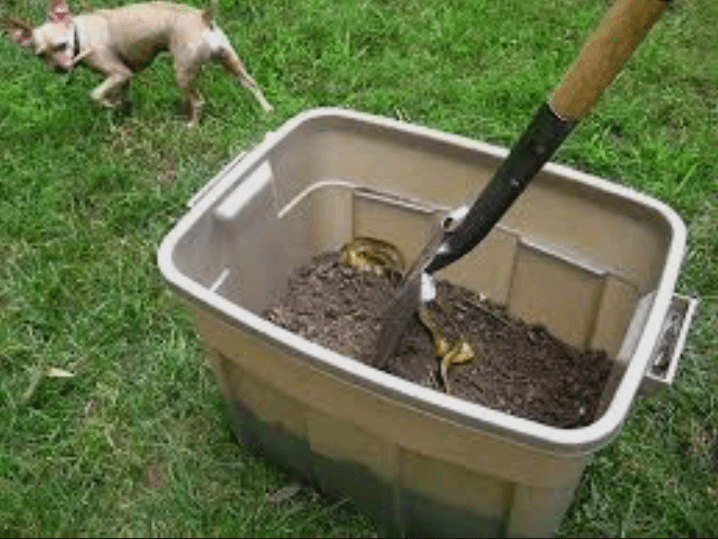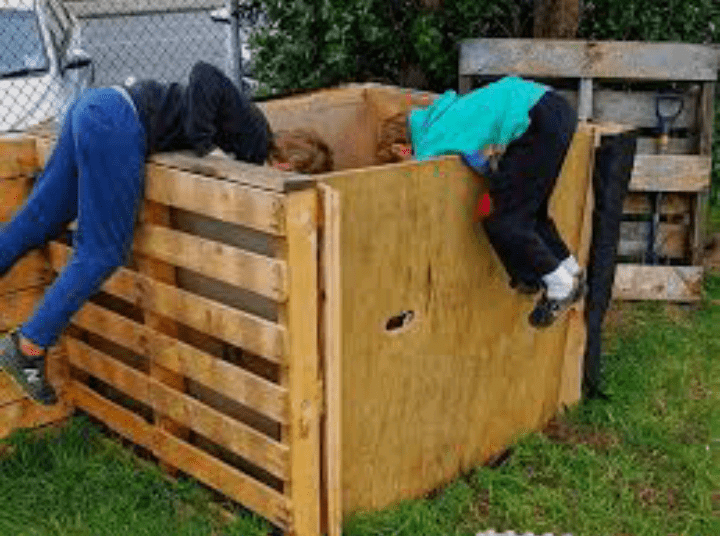Are you looking to turn your kitchen scraps and yard waste into a nutrient-rich elixir for your garden? Look no further – it’s time to embark on the journey of creating your very own compost bin! In this guide, we’ll walk you through the basics of composting and provide easy-to-follow steps for building a DIY compost bin.
Composting isn’t just a way to reduce waste; it’s a simple and effective method to enrich your garden soil, promote plant growth, and contribute to a healthier planet.
Compost bin DIY is a cost-effective and eco-friendly solution that anyone can embrace, regardless of space constraints or gardening experience. Whether you have a sprawling backyard or a modest balcony, there’s a composting solution for you. By diverting kitchen scraps and yard clippings from the landfill, you’re not only reducing your carbon footprint but also creating a valuable resource for your plants.
In the upcoming sections, we’ll explore different compost bin designs, from pallet bins to garbage can composters, offering options that suit various preferences and available materials. You don’t need to be a DIY expert – with simple tools and a bit of enthusiasm, you can build a compost bin that fits seamlessly into your lifestyle.
Composting is a natural process that relies on the synergy of organic materials, water, air, and microorganisms. As we guide you through the steps of creating your compost bin, we’ll also provide insights into achieving the perfect balance of green and brown materials, troubleshooting common issues, and utilizing your compost to nurture your garden.
So, whether you’re a seasoned gardener looking to enhance your soil or a beginner eager to embrace sustainable living, join us on this composting adventure. Let’s transform waste into wealth and cultivate a greener, healthier future for our gardens and the planet.
Read also: Creating Your DIY Fire Pit: A Guide to Cozy Outdoor Gatherings
Compost Bin DIY

1. Understanding Composting Basics
Before we embark on the journey of creating your own compost bin, let’s explore the fundamentals of composting. Composting is the decomposition of organic matter by microorganisms into a nutrient-rich humus. This process involves the breakdown of kitchen scraps, yard waste, and other organic materials into a valuable soil amendment. The key components of successful composting are:
Brown Material: Brown materials are rich in carbon and provide the energy source for the microorganisms responsible for decomposition. Examples include dry leaves, straw, shredded newspaper, and cardboard.
Green Material: Green materials are nitrogen-rich and provide protein for the microorganisms. This category includes kitchen scraps (fruit and vegetable peels, coffee grounds) and fresh yard waste (lawn clippings).
Water: Adequate moisture is essential for the composting process. The compost pile should be as damp as a wrung-out sponge.
Air: Turning the compost regularly introduces oxygen, fostering aerobic decomposition. Proper aeration prevents the compost from becoming anaerobic, which can lead to unpleasant odors.
2. Choosing the Right DIY Compost Bin Design
Now that you grasp the basics, let’s explore various DIY compost bin designs. The choice of design depends on factors like available space, aesthetic preferences, and the amount of organic waste generated. Here are three popular DIY compost bin designs:
Pallet Compost Bin:
- Materials needed: Wooden pallets, screws, and a saw.
- Instructions:
- Arrange three pallets in a U-shape, securing them with screws to form the walls of the bin.
- Use a fourth pallet as a hinged gate for easy access.
- Ensure proper airflow by leaving gaps between the slats.
Garbage Can Composter:
- Materials needed: Large plastic garbage can with a lid, drill, and bungee cords.
- Instructions:
- Drill several holes around the can for aeration.
- Place the can on a platform for drainage.
- Secure the lid with bungee cords to keep animals out.
Wire Mesh Bin:
- Materials needed: Wire mesh or hardware cloth, zip ties or wire, and stakes.
- Instructions:
- Form a cylinder with the wire mesh and secure the ends with zip ties or wire.
- Stake the bin into the ground for stability.
- This design facilitates excellent aeration.
Read also: DIY Fruit Fly Trap: A Simple Solution to Tackle Pesky Pests
3. Creating the Perfect Compost Mix
Now that you have your compost bin ready, let’s focus on achieving the ideal compost mix. The success of your composting venture relies on striking the right balance between green and brown materials. Aim for a ratio of approximately 3:1 brown to green materials. Here’s a breakdown of each:
Green Materials:
- Kitchen scraps: Fruit and vegetable peels, coffee grounds, eggshells.
- Fresh yard waste: Grass clippings, pulled weeds, and plant trimmings.
Brown Materials:
- Dry leaves: An excellent source of carbon.
- Shredded newspaper: Adds carbon and helps with aeration.
- Cardboard: Ensure it’s torn into small pieces to aid decomposition.
Layering is key to achieving the right balance. Begin with a layer of brown materials, followed by a layer of green materials. Repeat this process until the bin is full, turning the compost regularly to promote even decomposition.
4. Troubleshooting Common Composting Issues
Composting, while a straightforward process, can sometimes encounter challenges. Here are solutions to common issues:
Foul Odors:
- Cause: Anaerobic conditions due to compacted material.
- Solution: Turn the compost to introduce oxygen and add more brown material to improve aeration.
Pests:
- Cause: Uncovered compost attracting rodents or insects.
- Solution: Cover the compost with a secure lid and avoid adding meat or dairy products.
Slow Decomposition:
- Cause: Imbalance in green and brown materials or lack of moisture.
- Solution: Adjust the ratio of green to brown materials and ensure proper moisture levels.
Excessive Moisture:
- Cause: Overwatering or lack of aeration.
- Solution: Turn the compost to improve aeration and add more brown materials to absorb excess moisture.
5. Utilizing Compost in Your Garden
Once your compost is ready, it’s time to reap the rewards in your garden. Compost is a nutrient-rich soil conditioner that improves soil structure, water retention, and nutrient availability. Here’s how to use compost effectively:
Soil Amendment:
- Mix compost into your garden soil to enhance its structure and fertility.
Mulching:
- Apply a layer of compost around plants to retain moisture, suppress weeds, and regulate soil temperature.
Potting Mix:
- Create a homemade potting mix by blending compost with equal parts sand and topsoil for potted plants.
Compost Tea:
- Steep compost in water to create a nutrient-rich liquid fertilizer for your plants.
Read also: The Impact of Waste to Compost Business
